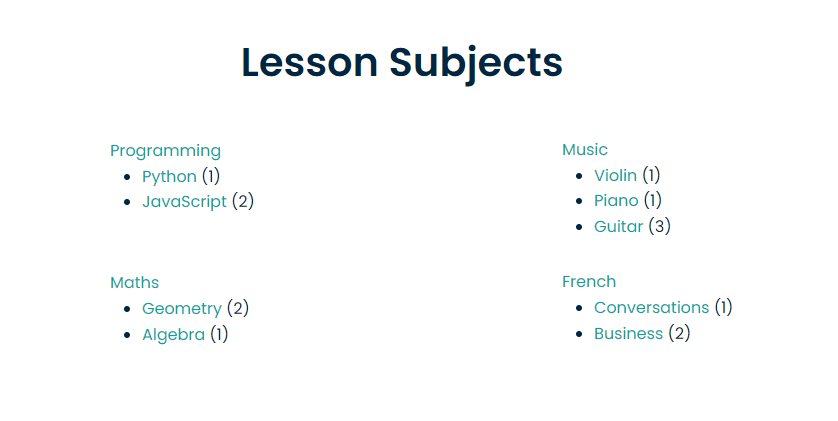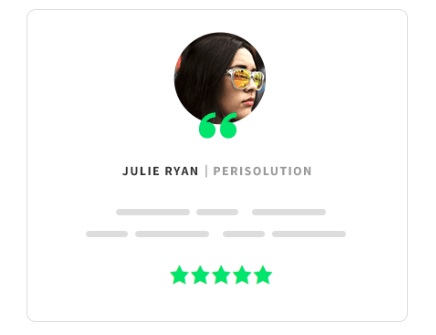10 Steps to Building, Growing, and Monetizing a Directory Website
With a directory website, you can build a platform that both consumers and companies find valuable. To unlock its full potential for growth and monetization, you need to make your directory website a key player in your industry.
Whether you’re looking to create a niche directory or a comprehensive local business listing platform, building, growing, and monetizing a directory website can be a rewarding venture.
Right from the start, a successful directory website requires work and creativity, especially if you want to make money from it.
In this tutorial, we’ll go over the 10 essential steps for building and monetizing a directory website. No matter what your niche is, you can follow these steps to establish your website as an invaluable resource in your industry.
What you’ll learn:
- Why opt for a directory website?
- How to build, grow, and monetize your directory website in 10 steps
- 1. Define your directory website’s niche
- 2. Choose a software or platform
- 3. Conduct market research
- 4. Create categories and subcategories within your niche
- 5. Develop your monetization strategy
- 6. Design a user-friendly website
- 7. Develop an SEO strategy
- 8. Build a robust database
- 9. Encourage reviews with incentives
- 10. Promote and market your directory website
- Conclusion
Why opt for a directory website?
Whether you’re in travel, hospitality, or a software company, you’ll find that every market needs a comprehensive online directory.
No matter the niche, a directory website gives your business a platform to showcase its offerings. At the same time, it serves as a one-stop solution that allows users to browse through different products or services.
However, to serve as a vital link between businesses and customers, your directory website needs to let users find exactly what they need.
To achieve this, directory websites usually serve a specialized niche and collect data from multiple sources. This makes them hybrid data marts, gathering information from:
- Subscribing businesses
- A database of its own
- Search engines and aggregators
How to build, grow, and monetize your directory website in 10 steps
1. Define your directory website’s niche
There are lots of directory websites out there, so it’s vital that you identify a niche and target audience. Rather than attempt to provide a horizontal, general directory, you should focus on a specific set of needs that your target audience has.
Some elements to consider when setting up a directory website include:
- Industry: What types of businesses, products or services will you be listing on your directory website? Identify a niche, even within your own, so you can attract a specific audience.
- Location: Are your target users looking for businesses or services in a specific geographic area?
- Pain points: It’s always useful to think about how your directory website is solving a specific problem or filling a gap in the market.
2. Choose a software or platform
Choosing the right software or platform for your directory website is essential. With a content management system (CMS) like WordPress, you have a reliable and scalable foundation to create your directory. WordPress offers extensive customization capabilities and a user-friendly interface, making it a strong choice for your directory website.
However, it’s not just about the platform itself; you also need to consider the tools and plugins that can enhance your directory’s functionality. Leveraging a powerful plugin like Toolset can further enhance your website development process by letting you build advanced sites without the need for extensive programming knowledge.
With Toolset, you can easily create custom post types, custom fields, and custom search forms. In turn, this allows you to tailor your directory to your specific niche and make it a comprehensive resource for users.
3. Conduct market research
Now it’s time to research your target market to identify its needs, preferences, and the existing competition. This will help you understand what your target users expect, determine the viability of your directory, and find opportunities to offer unique and much-needed features or services.
Identifying your target audience is an essential part of this process. You should create ideal user profiles with information including demographics and their typical interests and needs. Make use of online user forums, existing directory websites, and, if need be, online surveys to get the customer information you need.
4. Create categories and subcategories within your niche
Even once you’ve identified your niche, there are categories and subcategories within it. These will be essential for building your directory website, as users will have different needs and should be able to filter their searches accordingly.
Users may wish to search in subcategories based on location, price, or the exact service offered. A home services directory, for example, may have subcategories based on the work provided (electricians, plumbers, painters, and so on) and subcategories for location. These categories will be used for filters and to create category trees for your navigation bar when you design your website.
5. Develop your monetization strategy
Before launching your directory website, you should have a clear strategy for how you will monetize it. With Toolset’s comprehensive features, there are several viable options you can explore:
- Charging business owners for using front-end forms to submit their own premium listings that provide more information for customers than standard listings.
- Creating a View with advanced features that displays featured listings at the top of directory searches.
- Running an entirely membership or subscription-based website where businesses are required to sign-up using a front-end registration form and pay if they want to be included.
Once your directory starts expanding, you can consider other monetization options, such as:
- Displaying targeted advertisements, selling ad space, or partnering with affiliates and including affiliate links on your website.
- Providing value-added services for businesses that register, like lead generation and market research.
Options like a membership or subscription-based service or even premium listings may only be possible once your directory website has gained some traction and has a proven user base, so take this into account in your strategy.
6. Design a user-friendly website
Create a clear and intuitive website structure with organizing categories, subcategories, and search filters to facilitate easy navigation for users on any device. You should also set out the essential features your directory will offer, such as user reviews, ratings, maps, contact information, and advanced search capabilities, and make sure these are easily accessible for users. You might even consider a magazine-like layout to enhance the user experience.
To enhance the user experience and ensure the security of your website, it is crucial to choose a reliable hosting service to protect your website from potential vulnerabilities
You might also consider added features so that potential customers can get what they need out of your directory website with little hassle. This might include sample email templates for B2B users, or a ‘wishlist’ function that allows users to save products or services to return to later.
7. Develop an SEO strategy
If you want to attract users to your website, an SEO (search engine optimization) strategy is a must. Implementing an SEO strategy will ensure that your directory website appears high on search engine result pages, which will attract users and businesses that want to list on your site.
Some SEO strategies you might implement include:
- Keyword research: Conduct research into short and long tail keywords and ensure your website, metadata, and URLs contain them.
- Onsite content: Create a blog section for your directory website that is suited to your niche, and produce regular, original content.
- Backlinks: Partner with other businesses and websites or pitch to online magazines to produce offsite content that includes backlinks to your directory website.
8. Build a robust database
To import listings, you’ll need to build a comprehensive database. You can start by reaching out to businesses, services, and professionals in your chosen niche, as well as using online directories, business listings, and other sources to gather accurate and up-to-date information and providing an easy submission process for businesses to join your directory.
And since you’ll be handling large amounts of data at the backend of your directory, consider data management software that provides a lakehouse architecture and other flexible features. You should ensure your database is adaptable, secure, and cost-effective for the long run, as it’ll be the backbone of your website.
9. Encourage reviews with incentives
As soon as possible, you should engage with your users by encouraging them to contribute reviews, ratings, and testimonials. You can make this easy and fun for your users by implementing social sharing features to enable users to share listings with their networks and creating a sense of community by offering forums or discussion boards.
In the early days of your website, you may need to incentivize users to leave reviews. This might include rewards such as discounts for services found using your directory website or gift cards, but ensure you budget for these incentives.
10. Promote and market your directory website
Finally, it’s time to promote and market your directory so that you can attract both businesses and users. Typical online marketing channels like social media and email campaigns are a great, inexpensive way to start. You might also consider collaborating with industry experts or businesses in your niche to boost your visibility right away.
At this point, you’ve implemented all of the essential steps and strategies, but if you’re still unsure if your website is up to scratch, you can go over the stages of setting up and marketing your website. Of course, before you start marketing your website, it’s essential that it is ready for businesses and users to see and use.
Conclusion
Building, growing, and monetizing a directory website requires careful planning as well as ongoing effort. Even once you’ve followed the steps above, you’ll need to regularly maintain and update your website and keep an eye out for new strategies and opportunities for monetization. With the above steps, however, you can be sure you’re off to a good start and your directory website can become an essential and valuable resource for businesses and users alike.
Thoughts, Comments?
Every directory website journey is unique, and there’s a wealth of knowledge in experiences.
Have you faced any significant challenges or pain points in building and monetizing your directory site? Do you have any tips, tricks, or advice for those just starting out?
Share your thoughts, experiences, and advice in the comments below!
Please note, this post contains contributions from the Databricks team.




Dear,
We have a hybrid website containing a Directory for a niche of businesses (one man businesses in the health sector). Businesses can subscribe a monthly or anual subscribtion to display their data in the Directory. As an empty Directory is not attractive, we started years ago with adding ourself basic data of businesses. The issue is that we receive from time to time very angry emails of those businesses we added ourselfs to our Directory. Some of them even willing to start a lawsuit because they believe with enfringed the GDPR laws (european privacy laws), while the data we published was taken from their own website (this means the data is already made public and as such is not private anymore). First of all we are shocked by the agressivity of those people that received free publicity by being for free on our Directory. And second, we systematically removed them to avoid any lawsuit even if we know they can’t win it because they made their own data public by publishing them on their own website. Third, we do not add any other business in our Directory anymore to avoid any disappointing emails.
The data of the businesses we added : first name, last name, title of their profession, full address of their business address and their hidden email where visitors can send them a request through an online form (email stay hidden).
We also tried to avoid that issue by allowing a certain amount of businesses to subscribe for free , but the quality of those businesses was very poor and most of them didn’t care to provide the necessary data to be helpfull in a directory. We had to clean them out of the directory even if we sent them reminders to fullfill their business profiles, what they didn’t do.
Any suggestions how to add ourselves extra businesses to the Directory (to keep it alive), and avoiding those issues?
Hi David,
Thanks for sharing your experience. While most businesses would appreciate being listed in a directory (it is, after all, a great way to get more traffic and expand your customer base), there are businesses that appreciate an opt-in, opt-out model from the start. You can try to inform businesses before adding them. For some, a simple email explaining the benefits and seeking consent can avoid a lot of misunderstandings.
If you wanted to continue with adding businesses yourself, you can also add the business and then send an email to the business owners that explains the purpose of your site. You can also reassure the business owners and provide them with the power to retract, or to admin over their business on your directory. To be credible and trustworthy, consider quoting the law that you respect, and link to a page about data privacy and freedom.
Building, growing, and monetizing a directory website can be a rewarding endeavor, and your 10 steps provide a comprehensive roadmap for success.
Starting with a clear niche and audience research is essential. Understanding your target market’s needs and preferences will help you tailor your directory website to their specific requirements. Keyword research and SEO optimization, as mentioned in your steps, will also play a crucial role in driving organic traffic.
I appreciate your emphasis on creating high-quality, valuable content. Content is king in the online world, and offering informative listings, reviews, and articles can establish your directory website as an authoritative resource.
Furthermore, the steps about user-friendly design and mobile responsiveness are spot on. With so many users accessing the web via mobile devices, ensuring that your website is accessible and looks great on all screen sizes is imperative.
Content Management to Monetization Tools strategies such as advertising, premium listings, and affiliate marketing are solid ways to generate revenue from your directory site. Diversifying income streams can help stabilize your income.
Your step-by-step approach makes the process seem manageable, even for those new to the world of directory websites. Thanks for sharing this valuable guide, and I look forward to implementing these steps to create a successful directory website!
Thank you for your comment and thoughts!
Is toolset dead? Do you guys have plan to update and add more features?
Hi, Iman! Toolset is definitely not “dead” and we’re actually working on getting more developer resources for it. Until that happens I don’t really have an update about new features. Is there anything in particular you’re missing? However, in the meantime, we’ll continue to provide regular compatibility updates and fixes as we did this whole time.